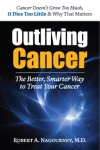Investigators in Boston Re-Invent the Wheel
March 9, 2015 1 Comment
A report published in Cell from Dana-Farber Cancer Institute describes a technique to measure drug  induced cell death in cell lines and human cancer cells. The method “Dynamic BH3 profiling” uses an oligopeptidic BIM to gauge the degree to which cancer cells are “primed” to die following exposure to drugs and signal transduction inhibitors. The results are provocative and suggest that in cell lines and some human primary tissues, the method may select for sensitivity and resistance.
induced cell death in cell lines and human cancer cells. The method “Dynamic BH3 profiling” uses an oligopeptidic BIM to gauge the degree to which cancer cells are “primed” to die following exposure to drugs and signal transduction inhibitors. The results are provocative and suggest that in cell lines and some human primary tissues, the method may select for sensitivity and resistance.
We applaud these investigators’ recognition of the importance of phenotypic measures in drug discovery and drug selection and agree with the points that they raise regarding the superiority of functional platforms over static (omic) measures performed on paraffin fixed tissues. It is heartening that scientists from so august an institution as Dana-Farber should come to the same understanding of human cancer biology that many dedicated researchers had pioneered over the preceding five decades.
Several points bear consideration. The first, as these investigators so correctly point out: “DBP should only be predictive if the mitochondrial apoptosis pathway is being engaged.” This underscores the limitation of this methodology in that it only measures one form of programmed cell death – apoptosis. It well known that apoptosis is but one of many pathways of programmed cell death, which include necroptosis, autophagy and others.
While leukemias are highly apoptosis driven, the same cannot so easily be said of many solid tumors like colon, pancreas and lung. That is, apoptosis may be a great predictor of response except when it is not. The limited results with ovarian cancers (also apoptosis driven) are far from definitive and may better reflect unique features of epithelial ovarian cancers among solid tumors than the broad generalizability of the technique.
A second point is that these “single cell suspensions” do not recreate the microenvironment of human tumors replete with stroma, vasculature, effector immune cells and cytokines. As Rakesh Jain, a member of the same faculty, and others have so eloquently shown, cancer is not a cell but a system. Gauging the system by only one component may grossly underestimate the systems’ complexity, bringing to mind the allegory of elephant and the blind man. Continuing this line of reasoning, how might these investigators apply their technique to newer classes of drugs that influence vasculature, fibroblasts or stroma as their principal modes of action? It is now recognized that micro environmental factors may contribute greatly to cell survival in many solid tumors. Assay systems must be capable of capturing human tumors in their “native state” to accurately measure these complex contributions.
Thirdly, the ROC analyses consistently show that this 16-hour endpoint highly correlates with 72- and 96-hour measures of cell death. The authors state, “that there is a significant correlation between ∆% priming and ∆% cell death” and return to this finding repeatedly. Given that existing short term (72 – 96 hour) assays that measure global drug induced cell death (apoptotic and non-apoptotic) in human tumor primary cultures have already established high degrees of predictive validity with an ROC of 0.89, a 2.04 fold higher objective response rate (p =0.0015) and a 1.44 fold higher one-year survival (p = 0.02) are we to assume that the key contribution of this technique is 56 hour time advantage? If so, is this of any clinical relevance? The report further notes that 7/24 (29%) of ovarian cancer and 5/30 (16%) CML samples could not be evaluated, rendering the efficiency of this platform demonstrably lower than that of many existing techniques that provide actionable results in over 90% of samples.
Most concerning however, is the authors’ lack of recognition of the seminal influence of previous investigators in this arena. One is left with the impression that this entire field of investigation began in 2008. It may be instructive for these researchers to read the first paper of this type in the literature published in in the JNCI in 1954 by Black and Spear. They might also benefit by examining the contributions of dedicated scientists like Larry Weisenthal, Andrew Bosanquet and Ian Cree, all of whom published similar studies with similar predictive validities many years earlier.
If this paper serves to finally alert the academic community of the importance of human tumor primary culture analyses for drug discovery and individual patient drug selection then it will have served an important purpose for a field that has been grossly underappreciated and underutilized for decades. Mankind’s earliest use of the wheel dates to Mesopotamia in 3500 BC. No one today would argue with the utility of this tool. Claiming to have invented it anew however is something quite different.














